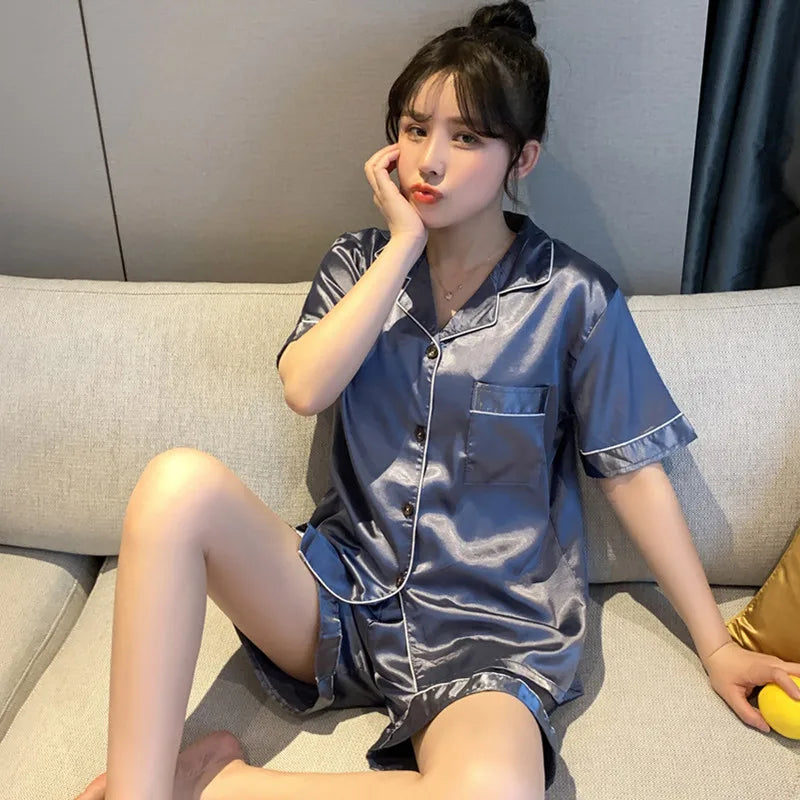How Many Onesies Do I Need? A Comprehensive Guide for New Parents
Table of Contents
- Introduction
- Understanding Onesies: The Basics
- Factors Influencing the Number of Onesies Needed
- How Many Onesies Do You Really Need?
- Choosing the Right Onesies
- Caring for Baby Onesies
- Conclusion
- FAQ Section
Introduction
The arrival of a newborn is a joyous occasion filled with anticipation, excitement, and a multitude of questions. One question that often arises is, "How many onesies do I need for my baby?" This seemingly simple query can become a source of stress for new parents, especially when faced with the overwhelming choices available in baby clothing.
Onesies, those adorable one-piece garments, are a staple in any baby's wardrobe. They are not only practical but also essential for keeping your little one comfortable and stylish. But determining the right number of onesies to stock up on can be tricky.
In this blog post, we will explore the various factors that influence the number of onesies you should consider for your newborn. We’ll delve into sizing, seasonal considerations, laundry routines, and more. By the end, you will have a clear understanding of how to prepare for your baby's clothing needs while embracing the elegance and comfort of premium nightwear options from Relaxed Nights.
Together, we will explore:
- The different types of onesies available
- Factors influencing the number of onesies needed
- How to choose the right onesies for your baby
- Tips for maintaining and caring for baby onesies
Let’s embark on this journey to ensure your little one is well-dressed, comfortable, and ready to greet the world!
Understanding Onesies: The Basics
Before diving into how many onesies you need, it’s essential to understand what a onesie is. A onesie, often referred to as a bodysuit, is a one-piece garment designed to cover a baby’s torso and diaper area. They typically fasten with snaps or buttons at the bottom for easy diaper changes and come in various styles, including short-sleeve, long-sleeve, and even kimono styles.
Types of Onesies
- Short Sleeve Onesies: Ideal for warm weather, short sleeve onesies allow for breathability while keeping your baby comfortable. These are perfect for layering or wearing alone during hot summer days.
- Long Sleeve Onesies: These provide extra coverage and warmth, making them suitable for cooler temperatures. Long sleeve onesies can also be layered under other clothing for added insulation.
- Envelope Neck Onesies: With wide neck openings that can be pulled down over the baby’s body, these onesies are particularly handy during diaper changes, especially if there's a mess.
- Kimono Onesies: Designed with a wrap style, they are easier to put on and take off, making them a great choice for newborns with sensitive skin or healing umbilical cords.
- Onesies with Integrated Mittens: These have fold-over flaps that cover the baby’s hands, preventing them from scratching their delicate skin and keeping their little hands warm.
Understanding the different types of onesies will help you make informed decisions about what to include in your baby's wardrobe.
Factors Influencing the Number of Onesies Needed
Now that we understand what onesies are, let's explore the various factors that can influence how many you might need for your newborn.
1. Baby’s Growth Rate
Babies grow at different rates, and this is particularly true during the first year of life. On average, newborns may outgrow their clothes every couple of months. This rapid growth can affect how many onesies you need at each size.
It’s common for parents to find that their baby may only wear newborn-sized clothing for a few weeks, while 0-3 month sizes are used for a longer period. Therefore, having a mix of sizes can be beneficial.
2. Frequency of Laundry
Your laundry routine plays a significant role in determining how many onesies you should have. If you do laundry every day, you can manage with fewer onesies. However, if laundry is done weekly, you will need more to ensure your baby has enough clean outfits on hand.
3. Climate and Season
The season in which your baby is born will dictate the types of onesies you need. If your baby arrives in the summer, you might prefer short-sleeved or sleeveless options. Conversely, winter babies will benefit from long-sleeve onesies to keep warm.
4. Daily Routine and Activities
Consider your daily routine and how often your baby will need outfit changes. Newborns typically require changes due to diaper leaks or spit-up. Expecting to change outfits several times a day may lead you to purchase a larger quantity of onesies.
5. Special Occasions
Don’t forget about special occasions! Having a few themed or stylish onesies for holidays or family gatherings can be a fun way to dress up your little one.
Summary of Key Points
- Babies grow quickly, often outgrowing clothes within weeks.
- Your laundry frequency affects how many onesies you need.
- Seasonal considerations dictate whether you need short or long sleeves.
- Daily activities and potential messes influence the number of outfits required.
- Special occasions may warrant additional cute onesies.
How Many Onesies Do You Really Need?
Based on the factors discussed, let’s put together a guideline for how many onesies you might need for your newborn.
Newborn Stage (0-3 Months)
For the newborn stage, having about 8-10 onesies is generally recommended. This amount allows for daily changes without overwhelming your laundry schedule. Since babies grow fast, it’s advisable not to overstock on newborn sizes.
3-6 Months
As your baby transitions to the 3-6 month size, consider increasing your stock to 10-14 onesies. This ensures you are prepared for growth spurts and the inevitable messes that come with babyhood.
6-12 Months
For older infants, having around 12-16 onesies is a good idea. At this stage, babies are more active, which often leads to more frequent outfit changes due to spills, drooling, or diaper leaks.
Summary of Recommended Onesies
- Newborn (0-3 months): 8-10 onesies
- 3-6 months: 10-14 onesies
- 6-12 months: 12-16 onesies
Choosing the Right Onesies
When it comes to shopping for onesies, quality should be a priority. Opt for those made from soft, breathable fabrics, such as organic cotton. This ensures your baby's sensitive skin is protected while providing comfort.
What to Look for When Shopping for Onesies
- Material: Choose high-quality materials that are gentle on a baby’s skin. Organic cotton is an excellent choice, as it is soft, breathable, and free from harmful chemicals.
- Ease of Use: Look for designs that make diaper changes easy. Snap closures or envelope necklines can save time and effort during those inevitable changes.
- Room for Growth: Ensure the onesies have some stretch to accommodate your baby’s growth and movements.
- Safety Features: Avoid any onesies with small buttons or embellishments that could pose a choking hazard.
Summary of Key Considerations
- Choose soft, breathable fabrics like organic cotton.
- Look for easy-to-use fastenings for quick diaper changes.
- Ensure a comfortable fit that allows for growth.
- Prioritize safety features in your choices.
Caring for Baby Onesies
Once you have your collection of onesies, it’s essential to maintain them properly to ensure longevity and hygiene.
Washing Tips
- Use Gentle Detergents: Opt for hypoallergenic and gentle detergents designed for baby clothes. Avoid fabric softeners, as they can irritate sensitive skin.
- Cold Wash: Wash in cold water to preserve the fabric and prevent shrinkage.
- Avoid Bleach: Steer clear of bleach and harsh chemicals that could harm the fabric or irritate your baby’s skin.
Drying Tips
- Air Dry: Whenever possible, air drying is the gentlest option for baby clothes. If using a dryer, select a low heat setting to avoid shrinking.
Storage Tips
- Store onesies in a dry, cool place, preferably folded neatly in a drawer. Organizing by size can help you easily access what you need as your baby grows.
Summary of Care Guidelines
- Use gentle, hypoallergenic detergents.
- Wash in cold water to prevent shrinkage.
- Air dry or use low heat in the dryer.
- Organize and store onesies by size for easy access.
Conclusion
Preparing for a new baby is an exciting journey filled with many decisions, including how many onesies to purchase. By understanding your baby's growth patterns, your laundry routine, and seasonal needs, you can confidently determine the right number of onesies to keep your little one comfortable and stylish.
At Relaxed Nights, we believe that every woman deserves to feel comfortable and beautiful, and this extends to nurturing your little ones with care and elegance. We encourage you to explore our premium nightwear collections, which are crafted to offer comfort and grace for every occasion.
As you prepare for your new arrival, we hope this guide helps ease any worries about clothing needs. Embrace the journey of parenthood, and remember that every moment spent with your little one is precious.
FAQ Section
How many onesies should I have for a newborn? For newborns, having about 8-10 onesies is recommended to accommodate growth and frequent outfit changes.
What size onesie should I buy for my newborn? It's advisable to have a mix of newborn and 0-3 month sizes, as babies often grow out of newborn sizes quickly.
How often should I wash my baby’s onesies? It’s best to wash your baby's onesies after every wear, especially after any spills or messes.
What material is best for baby onesies? Organic cotton is an excellent choice due to its softness, breathability, and safety for sensitive skin.
Can I use fabric softeners on baby clothes? It’s best to avoid fabric softeners, as they can irritate your baby’s skin. Use gentle detergents designed for baby clothing instead.



